By Colin Tung
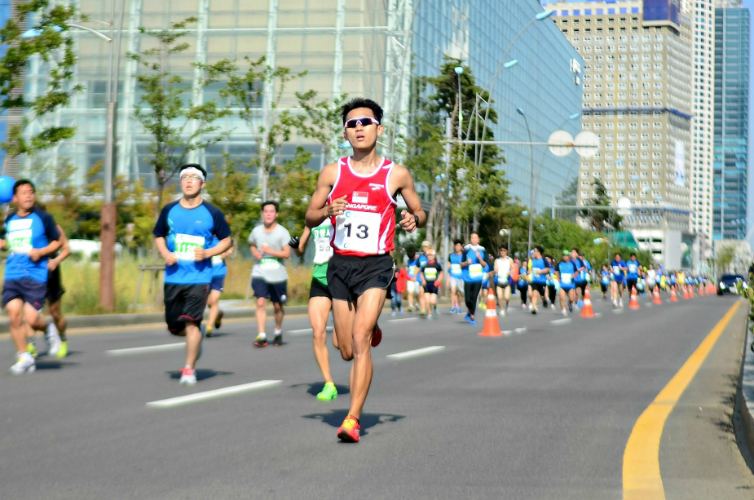
Colin Tung ran a personal best 1 hour 14 minutes 52.72 seconds at the Incheon Songdo Half Marathon. (Photo 1 courtesy of Jezreel Mok)
I have had a fruitful period of racing in a span of 36 days, during which I improved my half marathon personal best (PB) three times for a total of 2 minutes 18 seconds. First, at the Army Half Marathon (1 hour 17 minutes 7 seconds) on 31 August, then the Straits Times Run at the Hub (1:15:42.08) on 28 September, and most recently at the Incheon Songdo Half Marathon (1:14:52.62) on 5 October. They might all have been over the same distance but each has turned out differently yet encouragingly for me.
Straits Times Run at the Hub
My focus for the ST Run was different to the one I had for AHM. The AHM was my first half marathon this year and, therefore, I had headed into it with a more conservative attitude, unsure of my upper limits and with a focus on placing well rather than a fast time.
While the 1:17:07 effort at the AHM was a personal best, on hindsight, it felt like I was running within my means, as I managed a negative split. That mark, however, provided me an idea of my lower limits, thus I headed into the ST Run at the Hub determined to attack and run as fast a time as I could – somewhere in the 1:16 region – to set myself up for a 1:15 effort at the Incheon Songdo Half Marathon only a week later.
I started the race with my training partner, Russell Ericksen (whom, with Fang Jian Yong, I had run with for the most part of the AHM). We had discussed prior to the race to start off at a pace of 3 minutes 40 seconds per kilometre (which would translate to a 1:17 flat finish time) before quickening the pace later to enter 1:16 territory.
At the start line, I had seen some fast runners were also in the race, including a few Gurkhas and Kenyans, as well as Stuart Haynes. It did not take long after the start of the race for the race plan to fall apart when Russell decided to chase the leading two Kenyans – James Kemboi and John Njihia – and Gurkha Gurung Nimesh. I decided to stick to my strategy and not give chase so soon.
Stuart caught up with me after the first kilometre while I was running in the wake of two other Gurkhas, Birjung Budha and Bikash Rai, and he promptly surged ahead. I decided to go along with him and, soon, our pace left the Gurkhas behind.
Stuart’s pace was a tad quicker than mine and he established a 30-50m gap on me, which I only managed to close down at about 9km, near the Marina Bay Financial Centre. The next few kilometres were run alone and, though I had not understood it at the point, the strength and speed I felt during that phase set me up for my fastest 5km split (from 10km to 15km) of the race at 17:56.
As a result, I caught Russell somewhere between the 13th and 14th kilometre along Gardens by the Bay East. At that point, I knew I was in fourth position overall and only the two Kenyans and the Gurkha were ahead.
I could not see the top three runners anywhere in the distance, helped not least by the lack of long, straight roads but I continued to press, desiring to clock as fast a time I could and hoping perhaps that I could catch maybe one of them if I kept up the effort.
Midway between the 15km and 16km, however, approaching the Tanjong Rhu footbridge, two possible routes presented themselves: going straight onto the bridge or turning right onto a small footpath.
As I approached the two possible routes, I aimed a question in the general direction of volunteers whether I should go straight onto the bridge or turn right. With no forthcoming answer, I took the split-second decision to go onto the bridge but almost immediately doubted myself and, when I heard some shouts from behind, turned around to see someone pointing down the footpath that I should have taken.
Making a U-turn and heading towards the footpath, annoyed, I asked, “Why didn’t anyone say so earlier?” to which I got a reply from the marshal that there is a sign indicating so, which brings me to the point about situating a hydration station just before a vital turn in the course.
Before the footbridge, there had been a hydration station and I was focused on getting myself a cup of water or isotonic drink. Grabbing first, then a second cup, I was disappointed to find both empty. Frustrated, distracted, and looking towards the volunteers at the hydration to shoot off an enquiry why the cups were empty, that was when I probably missed seeing the directional sign.
The race had to go on and I had to make up for lost time. I calmed myself down and told myself the finish was not far away with the National Stadium’s dome already in sight. I was looking forward to the unique finish within the stadium.
In the last couple of kilometres, I realised Stuart Haynes was closing down on me. Knowing that I would be especially disappointed with myself if I had allowed him to regain that fourth position, I persevered and just about managed to hold him off eventually by four seconds as I crossed the finish line as the fourth finisher overall and the first Singaporean in 1 hour 15 minutes 42.08 seconds.
Race splits (based on personal GPS watch)
1km to 5km: 3:39-3:42-3:31-3:37-3:35 (18:04)
5km to 10km: 3:40-3:35-3:44-3:40-3:47 (18:26)
10km to 15km: 3:33-3:39-3:31-3:33-3:40 (17:56)
15km to 20km: 3:45-3:39-3:38-3:40-3:25 (18:07)
20km to 20.9km: 3:10
Total: 1 hour 15 minutes 43 seconds
Results
1. James Kemboi – 1 hour 10 minutes 38.15 seconds
2. Nimesh Gurung – 1:11:32.48
3. John Njihia – 1:13:23.97
4. Colin Tung – 1:15:42.08
5. Stuart Haynes – 1:15:46.08
6. Melvin Wong – 1:17:47.54
7. Russell Ericksen – 1:19:04.62
8. Birjung Budha – 1:19:38.82
9. Lexxus Tan – 1:19:47.46
10. Gordon Lim – 1:19:49.15
Incheon Songdo Half Marathon
The Incheon Songdo International Half Marathon gathered 12 international runners from seven countries including Kenya (three runners), Japan (two), China (one), the Philippines (two), Chinese Taipei (two), Hong Kong (one), and Singapore (one). At 9am in the morning in a cool 16.3 degrees celsius, the 12 of us were flagged off for the race together with a field of 24 other male and female South Korean elite runners.
I had planned to start off at 3 minutes 35 seconds per kilometre pace (which would set me on course for a 1 hour 15 minutes finish). I felt that it was an achievable aim to cut 43 seconds from my PB set a week earlier to go sub-1:15. But with only the Hong Kong runner, Nestor, for company as we ran adrift of the pack soon after the get-go, I decided to throw a little caution to the wind and allowed myself to start faster than I had wanted to, clocking in at 3:19 for the first kilometre.
Over the next four kilometres, I established a rhythm of my own as the leading runners got out of sight with splits of 3:27-3:30-3:27-3:29 (min/km).
The first five kilometres were relatively uneventful while I adjusted myself to the relatively unfamiliar experience of running in the cool, dry air of Incheon. While the climate meant I perspired much less than I would in Singapore, I was cautious of the dryness I felt on my lips and the abrasiveness of the cool air in my lungs, wondering if the water stations that would come only once every 5km were sufficient.
Before the first water station (each of which preceded a station where wet sponges were provided) at the 5km mark, the leading woman, a South Korean, rather stealthily caught up to me and swiftly edged past me followed closely by Nestor (whom I thought I had lost earlier).
I have run some of the my best half marathons with company alongside and, feeling more adventurous with the cooler climate allowing greater room for risks, I decided to follow them though the pace was faster than the 3:35 min/km I had planned for. I still felt relatively comfortable and was perspiring little, so I made a decision to increase my original target pace to 3:30 min/km for the rest of the race instead.
Adaptability is one of the traits I try to apply in my races; though the target pace had been 3:35, I felt good enough to venture sustaining a 3:30 min/km pace. People often say that running is a sport about finding one’s limits and, here, I was ready to shift what I thought were my limits based on how my body was responding to the effort during a race.
The pair of them – the leading South Korean female runner and Nestor – would turn out to be my running companions for most of the next three quarters of the race. The woman was impressive, running aggressively from the front and, since I did not desire to push the pace (which was already faster than I had planned to run), I stuck behind her.
At times, however, I felt the onus to help out with the lead. Passing the 10km mark, I was mindful to check my split and realised that the stimulus of running with others in a cool climate, along a flat and straight course, had led me to clock a 10km PB of 34:39 in the midst of a half marathon. If I kept up the pace, I was on course for another big PB at the end of the race over the half marathon distance.
While the 10km PB was pleasant, I knew I had to forget it and focus on the next half of the race. Anything could still happen and I needed to keep my focus, which, at times, while I was leading our pack of three, was disturbed when the top lady would accidentally clip my foot (she did so three times over the course of the race, for which, to her credit, she did apologise).
Leaving me uncomfortable with the space she afforded me when I shared the work and took the lead, and with her short, hasty gasps of breath affecting my rhythm, I decided to let her go ahead at about the 14km mark. Nestor had, around this time, also dropped off the both of us.
The top woman was always within view, however. It helped that the race took place in the brightness of day (as opposed to the pre-dawn starts usual of races in Singapore) and that the course took us through long and straight stretches of roads.
In the last five kilometres, I felt my legs growing increasingly leaden and knew that I was paying for the adventurous opening quarter. Shooting glances at my watch and making mental calculations, I knew I was on course to beat my personal best of 1:15:43 set just a week before and that a 1:13, while challenging, was not entirely impossible.
In the final couple of kilometres, I caught up with the top woman and went past her just as we crested a little incline in the road. I could feel the effort was getting perceptibly harder. Approaching a long, straight road that led to a sign saying, “Start”, I was thrown into confusion.
On the course recce the previous day, we had been told that the finish line was on the opposite side of the start line and, so, I was led to think there was more road to go before, perhaps, a detour towards the finish. (This area I headed towards marked as the “Start” was different from the one that we had actually started off from for the race.)
But, going by the time on my watch, the finish should not have been any further than the area I was heading towards marked as the “Start”. Not knowing whether to start my finishing kick, I pressed on at an effort slightly harder but not all-out so that, if the finish was actually later, I still had something to see me through. Time was running out in my effort to go sub-1:15, which would see me becoming only the fourth Singaporean in recent memory to do so (after Mok Ying Ren, Soh Rui Yong, and Ashley Liew as far as I recall).
Soon, I was close enough to see that the finish had been wrongly labelled. I crossed the line, 11th of the 12 invited international runners. I realised that I was only a few seconds behind the second Chinese Taipei runner but, more importantly for me, I was under the 1:15 mark, a new personal best by almost 50 seconds, which I was glad to bring home.
Race splits (based on personal GPS watch)
1km to 5km: 3:19-3:27-3:30-3:27-3:29 (17:12)
5km to 10km: 3:26-3:25-3:37-3:32-3:27 (17:27)
10km to 15km: 3:28-3:32-3:35-3:34-3:34 (17:43)
15km to 20km: 3:38-3:33-3:39-3:41-3:36 (18:07)
20km to 21.26km: 4:23
Total: 1 hour 14 minutes 52 seconds
Results
Men’s International
1. Isaac Kimutai Kiplagat (Kenya) – 1 hour 2 minutes 25.27 seconds
2. Elijah Chebonei (Kenya) – 1:03:32.10
3. Hillary Kipngetich Kibet (Kenya) – 1:04:36.59
4. Yasumasa Oneyama (Japan) – 1:05:41.42
5. Kinari Ikeda (Japan) – 1:05:42.41
6. Eduardo Buenavista (Philippines) – 1:08:05.47
7. Shanlin Chen (China) – 1:09:47.74
8. Ping-Feng Chen (Chinese Taipei) – 1:11:10.76
9. Eric Panique (Philippines) – 1:12:33.60
10. Lien-Chung Wen (Chinese Taipei) – 1:14:44.29
11. Colin Tung (Singapore) – 1:14:52.72
12. Nestor Wong Wai Chung (Hong Kong) – 1:15:52.57
The writer blogs at http://runcolt.wordpress.com
More photos next page

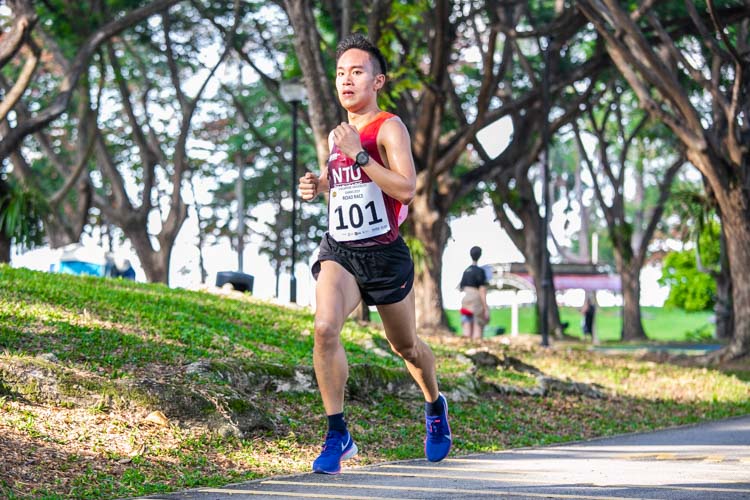
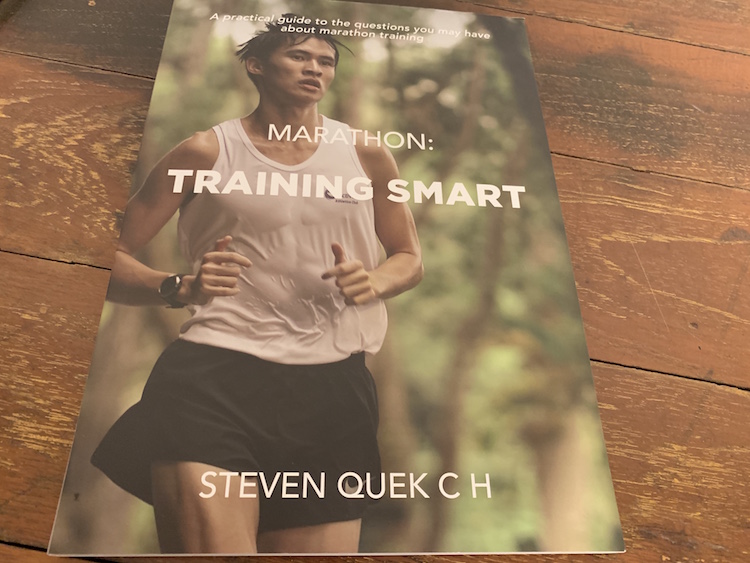
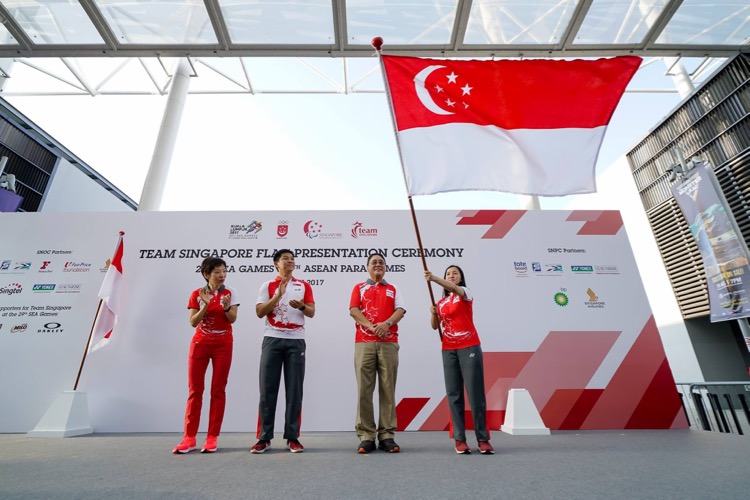
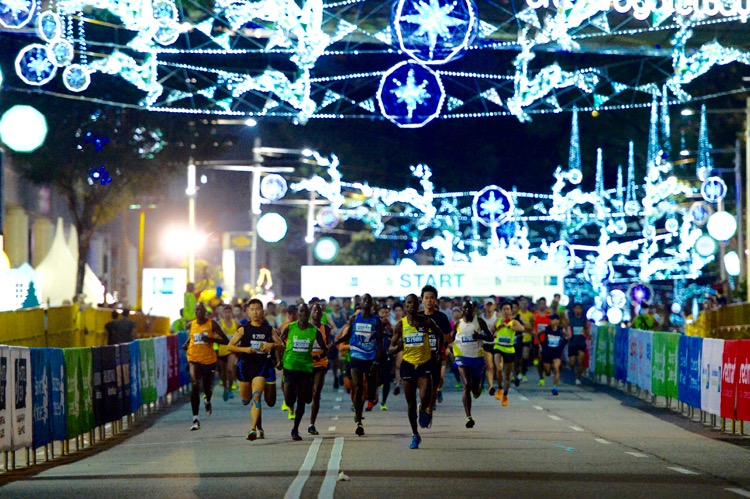
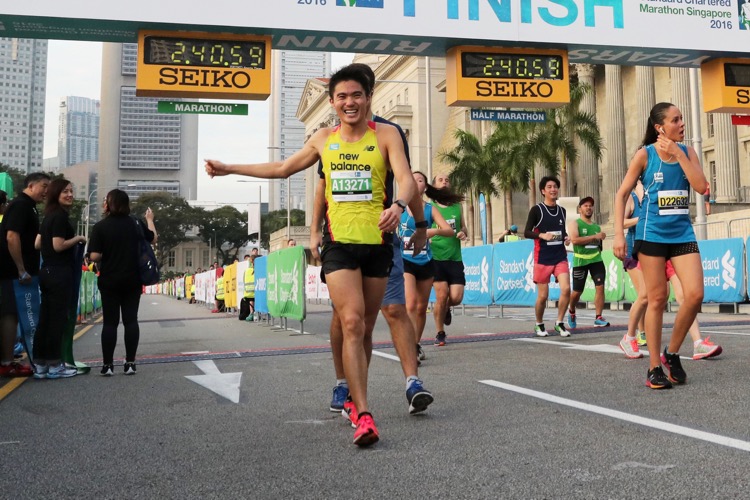
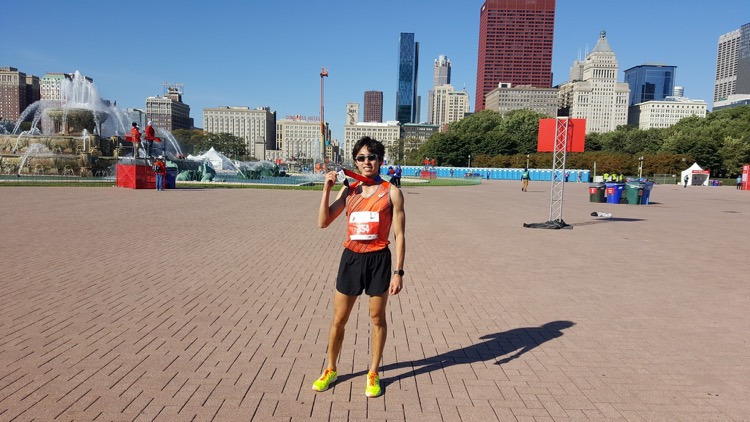
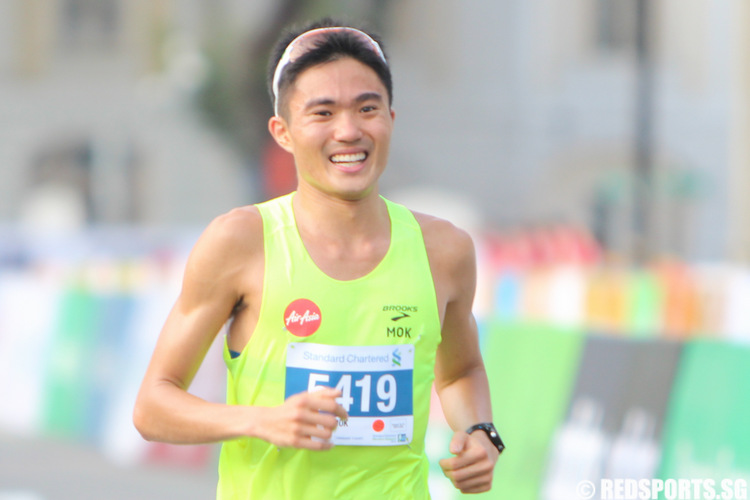
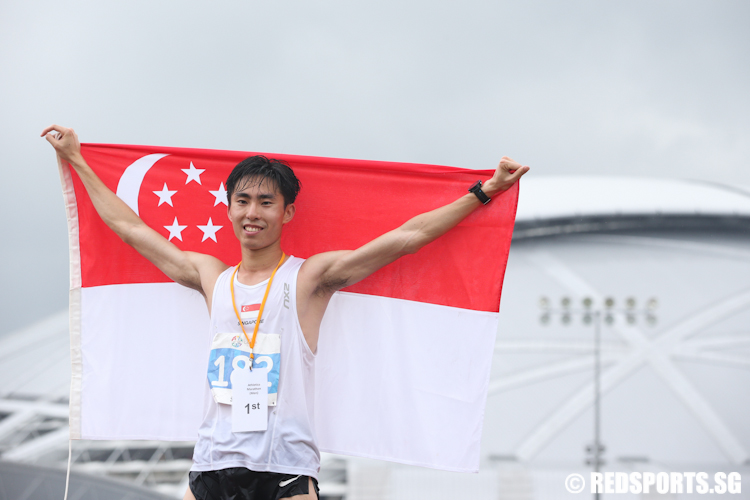
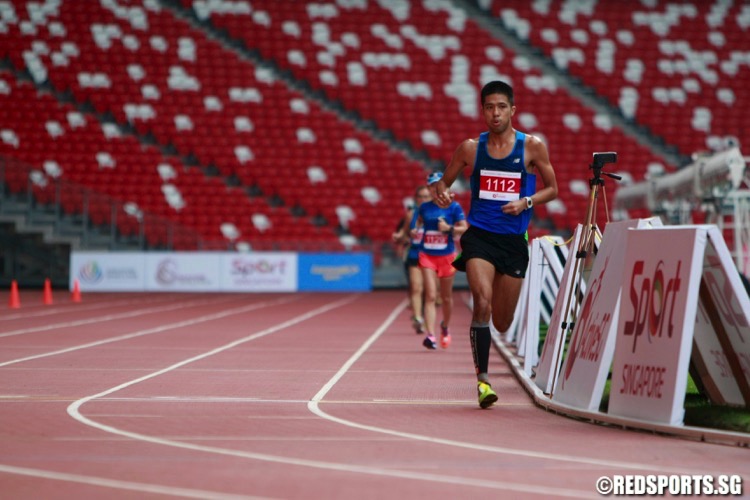
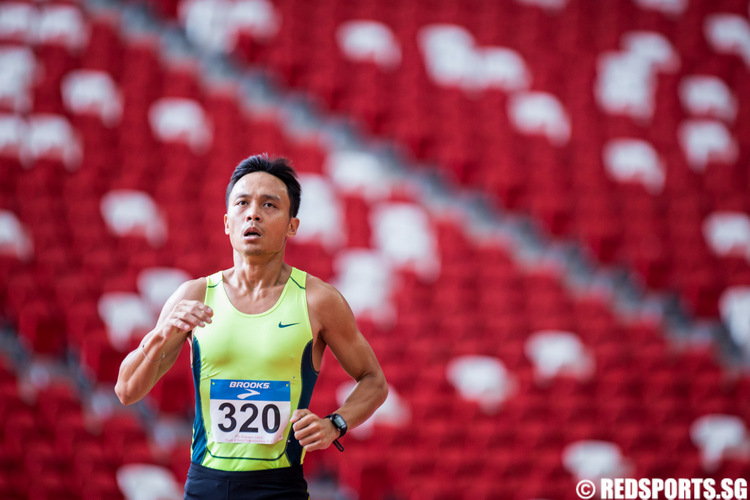
Leave A Comment